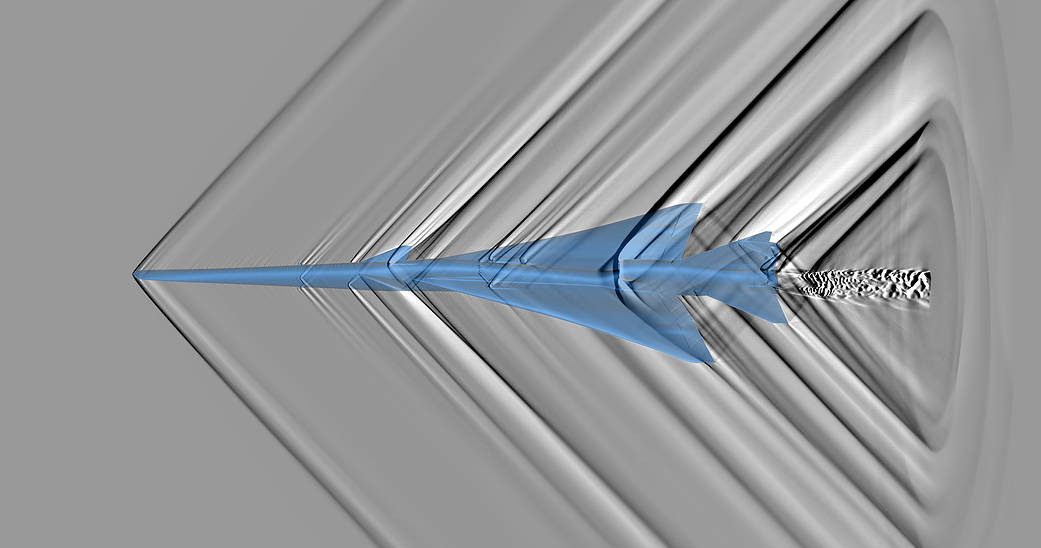Although it may look like an abstract piece of aeronautical artwork that could hang as a painting over an enthusiastic pilot’s fireplace, this image actually is the product of a complex computer simulation involving supersonic shockwaves. In this example the aircraft is the X-59 Quiet SuperSonic Technology airplane now under construction for NASA by Lockheed Martin in Palmdale, California. The X-59 is designed to generate sonic booms that are so quiet people on the ground will hear them as sonic thumps – if they hear anything at all. Eventually, the X-59 will be flown over select communities to measure public perception of the sound. Results will be given to regulators to use in determining new rules that could allow commercial faster-than-sound air travel over land. The airplane’s shape is the key to low booms. As NASA’s aeronautical innovators worked to finalize the airplane’s design, they ran their ideas through a high-resolution 3D simulation using the Pleiades, Electra, and Endeavour supercomputers at NASA’s Ames Research Center in California. The result was this computational schlieren image that visualized the X-59’s supersonic shockwaves. Schlieren photography is a long-known technique that is based on the fact light rays are bent when they encounter changes in a fluid’s density. But with no X-59 to photograph in flight – yet – the computer simulation was the next best thing. The dark and bright regions represent shockwaves and expansions, respectively. Significantly weaker shocks propagate from the lower surface of the aircraft, helping to confirm that quieter sonic thumps would be heard on the ground.
2 min read


































